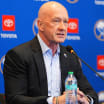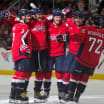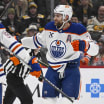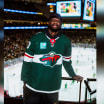The 2020 NHL Draft will be held virtually Oct. 6-7. The first round will be Oct. 6 (7 p.m. ET; NBCSN, SN, TVAS). Rounds 2-7 are Oct. 7 (11:30 a.m. ET; NHLN, SN1). NHL.com is counting down to the draft with in-depth profiles on top prospects and other features. Today, a look at how video scouting has become a vital part of preparation for the upcoming draft. NHL.com's full draft coverage can be found here.
2020 NHL Draft prospects get scouted via video during pandemic
Evaluators rely on clips, Zoom to rate players with seasons, tournaments canceled
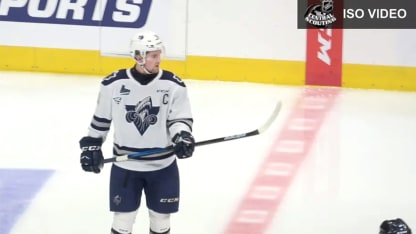
Paul Castron realizes there's no substitute for watching a potential NHL prospect play in person, but the cancellation of a slew of hockey tournaments and other events this spring due to the coronavirus left the New Jersey Devils director of amateur scouting unable to do so in the months leading up to the 2020 NHL Draft.
Castron is among the hundreds of scouts across the NHL who have had to resort to using game video and player interviews via Zoom in an attempt to finalize their 2020 draft boards during the pandemic.
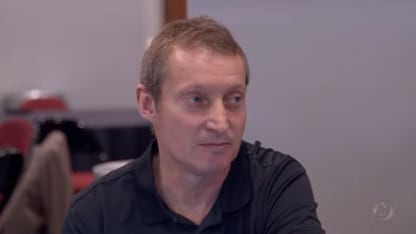
© Michael Morreale
Paul Castron, New Jersey Devils director of amateur scouting
"There's still nothing like being at a game live, but you pick up some good things on video and [see] some of the players that for me, or some of our other scouts, didn't see enough of," Castron said. "We're getting a lot of views, and the system's great. It allows us to watch a player's shifts; you don't have to watch the whole game and try and find him all the time. It's very helpful that way, and if you want to just watch his goals or assists, you can do that too. I think our staff has really enjoyed it."
That bodes well for the Devils, who have nine picks in the 2020 draft, including three of the top 20 selections.
As with many other industries over the past six months, it has been an unusual period for talent evaluators, including NHL Central Scouting, the League-based service for each of the 31 teams.
The NHL season was paused March 12 due to concerns surrounding the coronavirus, and the regular seasons and playoffs in the Canadian Hockey League (Ontario Hockey League, Western Hockey League, Quebec Major Junior Hockey League), United States Hockey League and European leagues were canceled, as were college conference tournaments and the NCAA Tournament.
Central Scouting's final meetings of the season were held virtually for the first time, with director Dan Marr leading a conference call with eight full-time scouts during the final week in March.
"Video and analytics have continually been advancing, particularly in the last decade, and video has always been a coaching and scouting resource," Marr said. "For 2020 draft preparation, there obviously is more widespread use of video due to the cancellation of games and the fact that it's a readily available resource.
"Video from play with national teams, world championships and playoff performances are typically viewed to complement assessments from league play, but this year, the video from league play has been examined more closely -- the fact that there is no playoff competition to evaluate prospects does change the projection model."
Central Scouting was unable to evaluate prospects at the NHL Scouting Combine, which had been scheduled for June 1-6 in Buffalo. The draft was originally scheduled for June 26-27 in Montreal but was postponed due to the coronavirus.
The various cancellations also created a ripple effect when it comes to collecting the necessary data and viewing eligible prospects for the 2021 NHL Draft.
"All the NHL clubs and Central Scouting are in the same scouting circumstances," Marr said, "and not having the summer and preseason events means a lost opportunity to provide an early identification of NHL draft prospects.
"Fortunately, with Central Scouting, we are set up with an online system in which we can proceed to distribute and collect player information and questionnaires of 2021 NHL Draft prospects, and we will be activating that process."
Though video scouting isn't perfect, it's the next-best option under the current conditions, Dallas Stars director of amateur scouting Joe McDonnell said.
"You begin to realize once you're [using video regularly], how much you miss the car and airplane," McDonnell said. "It's not easy doing the video but it confirms some things, I guess. It's sort of nice just to refresh your memory on skating techniques and different things you've watched with kids all year. It's actually a good process, but you also wish you had the live viewings as well."
McDonnell said he was particularly disappointed about the cancellation of the 2020 IIHF World Under-18 Championship, which was to be held in Plymouth and Ann Arbor, Michigan, from April 16-26. The tournament would have given scouts and general managers one final opportunity for in-game evaluations of about two dozen potential 2020 draft prospects from the United States, Canada, Sweden, Finland, Russia, Germany, Czech Republic, Switzerland, Belarus and Latvia in person.
"We would have loved to have been down in Plymouth getting our last viewing, so that makes it extremely difficult," McDonnell said. "There's some kids that you might have only seen once or twice since August (of 2019), and you're just waiting for that April tournament to come around so you can just sort of finalize everything.
"We didn't have that luxury and it is what it is, but it's the same for everybody."
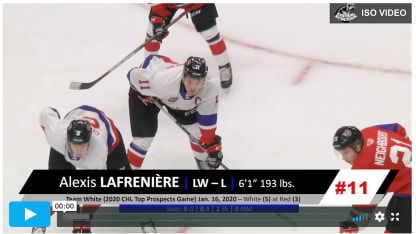
Despite the circumstances, the Montreal Canadiens have been able to prepare extensively for the draft, assistant GM Trevor Timmins said.
"We have a structured process we apply to every draft year, and this hasn't changed for us," he said. "I have our staff adhering to the process, which works towards developing our organizational draft board. I've kept the amateur scouting staff very busy, somewhat like a university professor, with assignments which have due dates, and the assignments come in an orderly fashion, and in working towards developing our area lists."
The Canadiens have 11 picks in the draft, including four of the top 62 (three in the second round) in what many believe to be a deep class at all positions.
"We have an online video database that all my scouts have access to and a game library of almost every game that a draft prospect or player, anywhere throughout the world, has played," Timmins said. "We can break these games into shifts, goals, assists, breakout passes, along with some analytics. There's a lot of work, a lot of information available to our scouts online. One of the assignments was to watch all the players in game situations, about five to 10 games, and file written reports in our system.
"We're able to do this because we have the bulk of our live coverage done; if you went [in] blind and [had] never seen a player live, and expect to get a good projection, that would be very difficult to do if you just went on video. But our entire staff has a big library of live coverage, which enables us to maybe look at things a little different."
What are scouts looking for in video viewings?
"I think most of it comes down to skating," Castron said. "You could overrate or underrate a player either way. I know I've had some players that I said were good skaters that I might knock down to average-plus and vice versa, guys I thought maybe struggled a little bit but showed me that they're better than I gave him credit for.
"With defensemen, everything happens so fast when you're at a game live, sometimes you think a mistake might have been one guy's fault but then you watch the replay and say, 'Oh, it wasn't.' I think that's something that comes out in the video, especially with defensemen, with how they read and react to a 2-on-1 or when they pinch."
Castron said it's the same scenario with forwards when going to the video.
"The thing is, these kids play 60 to 70 games and you might only see 10 to 12 of them live," he said. "With forwards, for instance, does he go to the net? You might think a guy goes to the net hard all the time, and then you're watching the other 50 to 60 games that you didn't see live, and now you're viewing that same player pull up more than you saw on a live viewing. So it's interesting and it's helpful."
Central Scouting senior manager David Gregory has seen a big change in the evolution of video since he joined the bureau 17 years ago.
"It's come a long way, just with the quality of the video, even from the lower levels of the game, like prep schools, high schools and Tier 2 junior," Gregory said. "Major junior and colleges have been ahead of some of those other leagues with their video, but everybody's catching up now because the technology and the ability to produce quality video gets easier and it's more affordable, so everybody's doing it and there's resources to find it online easier.
"When you scout somebody and see growth, you want to recall what you saw live, so you look at your reports, but video is always a great reminder. We've used it in Central Scouting's final meetings since you have so many players in your head. Video is an excellent tool, and it's probably going to be used way more with the team scouts now."
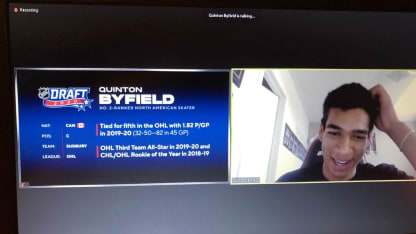
Former NHL GM Craig Button, resident director of scouting and NHL analyst for TSN, said watching video provides balance when evaluating a player.
"When I'm looking at notes and writing notes, I might put a question mark and that's when I want to go back and check," Button said. "Video gives you greater confidence to the evaluation of a player. I think if you're solely reliant on eyes only, or solely reliant on video, you're missing things. Do you want to miss things in evaluation? No. So use everything at your disposal to give you as much confidence as possible to say, 'That's our guy.'"
The Devils have their own pick (No. 7) and two others in the first round. They acquired the Arizona Coyotes' pick (No. 18) in the trade that sent Taylor Hall to Arizona on Dec. 16, and the Vancouver Canucks' selection (No. 20) from the Tampa Bay Lightning in the trade that sent Blake Coleman to Tampa Bay on Feb. 16. Castron said there are usually as many as 10 scouts and/or management personnel on Zoom calls with potential draft prospects.
Devils director of amateur scouting operations Scott Harris has arranged the calls with players.
"It's a 30-to-40-minute process where (director of player and team development) Dr. Aimee Kimball starts the interview off before one of our selected scouts begins asking questions," Castron said. "We designated a scout for each player and then turn it over to (general manager) Tom Fitzgerald, (assistant general manager) Dan MacKinnon and (executive vice president of hockey operations) Martin Brodeur (executive vice president, hockey operations) from the management side to finish it up."
The Devils have interviewed between 40 and 50 prospects via Zoom.
"The kids seem pretty relaxed for the most part," Castron said. "You can tell some kids have more nervous energy than others; they could be fidgeting around a little bit more, but that doesn't mean anything really. After [Kimball] finishes up, we kind of dive into things we might not like in a player's game. We're not crazy hard on them, but we don't want to just throw up easy volleys all the time. We want to find out what they're thinking when they did certain things and what kind of repercussions there were from the coaching staff when they got back to the bench.
"Why does this guy play so well when he throws on the national team jersey, but then we can't find him on his regular team? Crazy stuff like that."
Ottawa Senators GM Pierre Dorion said interviewing prospects via Zoom proved beneficial.
The Senators have the Nos. 3, No. 5 and No. 28 picks in the first round, four picks in the second round and 13 selections in all. In addition to its pick at No. 5, Ottawa has the San Jose Sharks' first-round choice (No. 3), which it acquired in the trade for defenseman Erik Karlsson on Sept. 13, 2018. The Senators acquired the No. 28 pick in the trade that sent center Jean-Gabriel Pageau to the New York Islanders on Feb. 24. They are the first team since the Islanders in 2000 to have two choices in the top five; New York selected goalie Rick DiPietro No. 1 and forward Raffi Torres No. 5.
Dorion knows the importance of this draft for his organization and is grateful he and his staff had the ability to utilize video to speak with so many prospects.
"We were fortunate enough that instead of having 15 minutes with the players we would normally have at the NHL Scouting Combine, we had, with some of them, multiple hours with them through Zoom," Dorion said. "We aren't allowed to meet players in person, which is something a lot of general managers picking at the top of the draft would have wished for, but we have to respect the process."
That process was unusual, and so were some of the questions the prospects were asked. Dylan Holloway, No. 12 in Central Scouting's final ranking of North American skaters, provided an example of one from a Zoom interview.
"I was asked if I'd rather have $20 in my pocket right now or have to fish out $100 from a toilet," the University of Wisconsin center told the NHL Draft Class podcast. "That was a weird one. I knew it was like a test. I said, 'The $100, because I'm not afraid to go to the dirty areas.'"
NHL Draft Class: Me & @NHLAdamK chat w/ Dylan Holloway of @BadgerMHockey. Dylan discussed his current training regimen, CAN's virtual WJC camp, his 1st season in Wis, roommate Alex Turcotte (@LAKings),+more.
— Mike Morreale (@mikemorrealeNHL) July 16, 2020
Apple Pods -https://t.co/SzKblnnoSF
Spotify - https://t.co/N6e0APfzsJ
Center Anton Lundell of HIFK in Finland had a similar experience on a Zoom call with an NHL team.
"Every team asks many of the same questions, like what I like to do off-ice and to describe myself as a person and teammate," said Lundell, No. 3 in NHL Central Scouting's final ranking of International skaters. "But then there are funny questions. One team asked me what animal I would like to be now and what animal I'd like to be when I'm older.
"I think I did answer, 'A lion.' I don't know ... it was just the first animal that came to my mind."
Scouts and personnel have tried to make the most of the Zoom interviews with prospects. As for whether the change in how scouts have had to compile their final draft boards this year created any added pressure, Marr said, "There's always pressure on NHL scouts to identify and draft prospects with NHL potential and the body of work that the scouts put into this undertaking is a yearlong process. Missing out on playoffs and world championship competition, the NHL Scouting Combine and not being able to scout prospects while knowing the club's draft position presents a new challenge from traditional scouting.
"These factors will influence the projection model, but NHL scouts are a hardworking, well-informed and experienced group, and they continue to utilize all resources available in their draft preparations."
And the resource scouts have relied on more than usual this time is one they know they can trust as much, if not more than, their own eyes.
"Players will always tell you," Button said, "'The video never lies'."
---
Listen: New episode of NHL Draft Class

